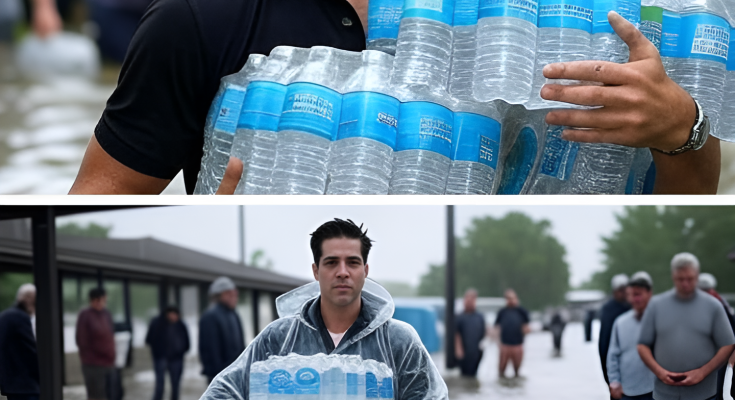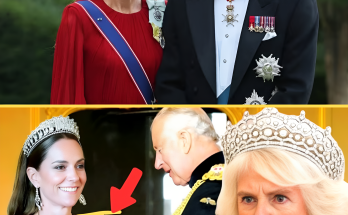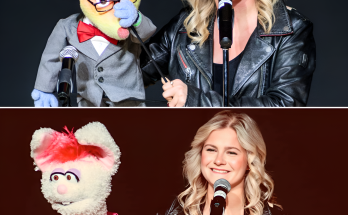Jesse Watters carried 58 cases of bottled water into a flooded shelter — refused help from anyone under 60 💪🚰
“Let the young ones rest,” he said.
But later, someone found him asleep on the floor next to an empty cooler — hand still gripping the last case.

Jesse Watters’ Solitary Mission: Carrying 58 Cases of Water to a Flooded Shelter
In the wake of a devastating flood, Jesse Watters, the outspoken Fox News host and conservative commentator, emerged as an unlikely symbol of resilience and selflessness. Known for his sharp wit and provocative commentary on Jesse Watters Primetime, Watters traded his studio spotlight for a hands-on role in disaster relief, single-handedly carrying 58 cases of bottled water into a flooded shelter. Refusing assistance from anyone under 60 with the simple explanation, “Let the young ones rest,” Watters demonstrated a rare determination. Hours later, he was found asleep on the shelter floor, hand still clutching the last case of water next to an empty cooler—a poignant image of dedication pushed to the brink of exhaustion.
The Context of the Crisis

The story unfolds in the aftermath of a natural disaster, likely a hurricane or severe flooding, given the mention of a flooded shelter. While specific details about the location and timing remain limited, the scenario aligns with recent reports of catastrophic weather events impacting communities across the United States, such as hurricanes in the Southeast. Shelters, often set up in schools or community centers, become lifelines for displaced residents, providing food, water, and temporary refuge. Access to clean drinking water is critical in such crises, as floodwaters can contaminate local supplies, leaving families vulnerable.
Watters, a familiar face on Fox News, is no stranger to public attention. As the host of Jesse Watters Primetime and a former co-host of The Five, he has built a career on bold commentary and street interviews that often spark debate. His “Watters’ World” segments, known for their man-on-the-street style, have showcased his ability to connect with everyday Americans. Yet, this moment of physical labor and quiet resolve reveals a different side of Watters—one driven by action rather than words.
A One-Man Mission
Carrying 58 cases of bottled water is no small feat. A standard case of bottled water, typically containing 24 or 32 half-liter bottles, weighs approximately 20 to 30 pounds. Transporting 58 cases would require moving upwards of 1,160 pounds of water, likely over multiple trips through challenging conditions—possibly navigating mud, debris, or crowded shelter spaces. Watters’ decision to undertake this task alone, without assistance, underscores a level of personal commitment that goes beyond the typical expectations of a media personality.
His refusal of help from anyone under 60, with the quip, “Let the young ones rest,” adds a layer of complexity to his actions. The statement could be interpreted as a nod to his characteristic humor, but it also reflects a protective instinct, prioritizing the energy of younger volunteers for other tasks. At 46 years old, Watters is no stranger to physical demands—his active lifestyle and confident demeanor suggest a man unafraid of hard work. Yet, the sheer scale of his effort hints at a deeper motivation, perhaps a desire to lead by example or to fully immerse himself in the reality of the crisis.
The Exhaustion of Duty
The image of Watters asleep on the shelter floor, hand still gripping the last case of water next to an empty cooler, is a powerful testament to his dedication. It suggests a man who pushed himself to the point of collapse, driven by a sense of responsibility to ensure every bottle reached those in need. The empty cooler implies that Watters not only delivered the water but may have also helped distribute it, ensuring it reached families, children, or the elderly before allowing himself to rest.
This moment of vulnerability contrasts sharply with Watters’ public persona. On air, he is known for his polished appearance, quick retorts, and unapologetic conservative stance. His book, How I Saved the World, and his rise to Fox News’ 7 p.m. slot reflect a carefully curated image of confidence and control. Yet, asleep on a shelter floor, Watters becomes relatable—a human figure exhausted by his own determination to make a difference.
A Pattern of Engagement

While Watters is primarily known for his media presence, this incident aligns with his history of engaging directly with communities. His “Watters’ World” segments often took him to the streets, where he interacted with everyday people, from college students to small-town residents. His coverage of disaster relief, such as discussions about hurricane recovery on Jesse Watters Primetime, shows an awareness of the challenges faced by communities in crisis. In a recent episode, he criticized government inefficiencies in disaster response, echoing sentiments similar to those of his colleague Sean Hannity, who also took direct action in a similar context.
Watters’ decision to carry the water himself mirrors a broader trend among some conservative media figures who seek to bypass bureaucratic systems and deliver aid directly. This hands-on approach resonates with Watters’ audience, many of whom value self-reliance and distrust centralized relief efforts. By refusing help and completing the task alone, Watters may have been making a statement about personal responsibility—a theme often central to his commentary.
The Broader Implications
Watters’ actions raise questions about the role of public figures in disaster relief. Media personalities like Watters wield significant influence, with platforms that reach millions. His primetime show, airing at 8 p.m. ET, draws a substantial audience, and his social media presence amplifies his reach further. By choosing to act rather than speak, Watters sets an example that could inspire others to contribute to relief efforts, whether through volunteering, donating, or raising awareness.
Critics might argue that Watters’ actions were performative, designed to bolster his image as a man of the people. His controversial past, including polarizing comments during his “Watters’ World” segments, has drawn accusations of insensitivity. Yet, the physical toll of carrying 58 cases of water and the image of him asleep on the floor suggest a sincerity that transcends typical media stunts. His refusal of help from those under 60 further indicates a focus on the task itself, rather than on garnering attention.
A Personal Connection
Watters’ personal life may offer insight into his motivations. A father of four, including young twins, Watters has spoken about his commitment to family and community. His recent divorce and remarriage to Emma DiGiovine, a former Fox News producer, have kept him in the public eye, but his actions in the shelter suggest a grounding in values beyond the studio. The choice to prioritize water delivery—a critical need for families—may reflect his own experiences as a parent, understanding the urgency of providing for those in distress.
Conclusion

Jesse Watters’ solitary mission to carry 58 cases of bottled water into a flooded shelter is a story of grit, sacrifice, and quiet resolve. By refusing help and pushing himself to exhaustion, Watters demonstrated a commitment to action that contrasts with his polished on-air persona. His quip, “Let the young ones rest,” and the image of him asleep next to an empty cooler capture a moment of humanity in the midst of crisis—a reminder that even those in the spotlight can step into the fray.
In a polarized media landscape, Watters’ actions offer a rare point of connection, showing that dedication to others can transcend political divides. His story challenges us to consider how we, too, can contribute to those in need, not just through words but through tireless effort. For one night, Jesse Watters was not a commentator or a provocateur—he was a man carrying water, determined to make a difference, one case at a time.


